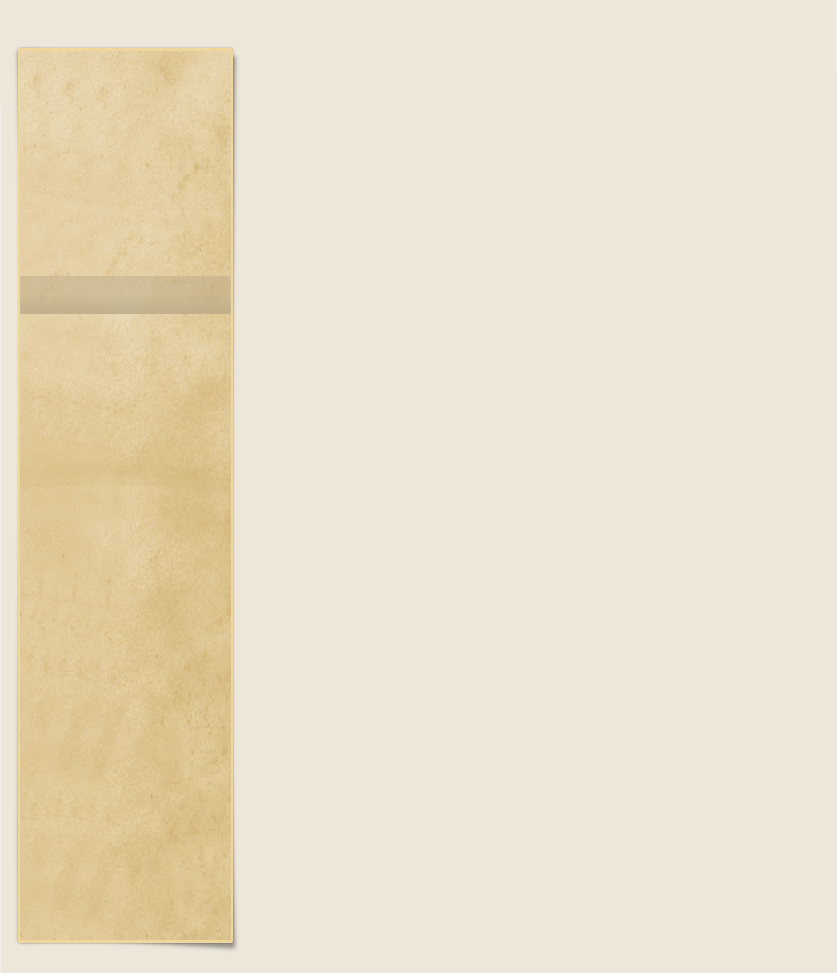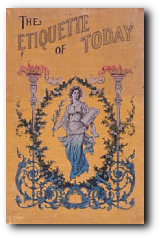


“Hospitality is a great pleasure to people of a sociable nature, and its obligations have a most refining influence. The generous consideration of others reaches its acme when one is constantly entertaining little circles of friends, with no thought but to give happiness.”
Edith. B. Orday

Etiquette of Today
Author: Edith B. Orday Published: 1918
Personality
Family Etiquette
Conversation and Correspondence
Casual Meetings and Calls
The Personal Card and the Engraved Invitation
Behavior in Public
The Art of Being a Guest
Duties of Host and Hostess
Duties of the Chaperon
Etiquette of the Marriage Engagement
The Conduct of a Wedding
Etiquette for Children
Etiquette of Mourning
Military, Naval, and Flag Etiquette

CHAPTER XV
MILITARY, NAVAL, AND FLAG ETIQUETTE
THE social usage in respect to military or naval officers follows ordinarily the customs of formal occasions or occasions of state in civilian life, or is provided for in the instructions of the army and the navy, which the members of those two departments of the service would alone be expected to know. There are, however, one or two occasions where the etiquette of social life is, or may be, modified by the formalities due to these representatives of the Government.
The Formal Military Wedding
The church or formal home wedding where the bridegroom and his attendants are all army men, may have the distinctive feature of the arch of swords or bayonets. The bridegroom and the ushers, in that case, are all in full dress uniform. The bride and bridesmaids are dressed daintily and fluffily to afford contrast. The church should be decorated with palms and lilies, and with the national and the regimental flags in the chancel. As the organist begins the wedding-march, two color-bearers of the regiment, carrying one the national flag and the other the regimental colors, precede the bridegroom and the best man from the vestry. The latter take their usual places, and the color-bearers move to a position at either side of the chancel steps. After the ceremony, they move to the head of the aisle, and the ushers form a line to the foot of the chancel steps. The ushers then put on their caps, unsheathe their swords, or raise their bayonets, and form an arch with them. Under this arch pass the bride and bridegroom, and the bridesmaids. Then, sheathing their swords and removing their caps, the ushers fall into line at the end of the procession.
Naval and Yachting Usage
When one is the guest of the owners or the officers of a yacht, or of the officers of a government warship or other large vessel, it is well to know that in the lading of the gig for reaching and leaving the ship, the order of precedence is always as follows: Juniors in rank or official importance enter the gig first, and the one highest in rank immediately precedes the Captain, who is always the last to embark and the first to disembark. In leaving the gig, the order is reversed from that on entering it, the junior in rank thus being the last to leave the boat.
The Etiquette of the Flag
The flag is displayed every day only on government buildings and schoolhouses. On state holidays, and like commemorative days when it is customary for the flag to be displayed on private buildings, it should be raised at sunrise and lowered at sunset. It should not be displayed on stormy days, nor left out over night. It should never be allowed to touch the ground. When it is to be displayed at half-mast only, it should be raised to the tip of the staff and then lowered halfway. It should never be festooned or draped, but always be hung flat.
On Memorial Day, May 30, the flag should be displayed at half-mast until twelve o'clock noon, and then raised to the top of the staff until sunset. The salute for the changing of the position of the flag at all army posts and stations having artillery, is as follows: immediately before noon, the band plays some appropriate air, and at the stroke of twelve the national salute of twenty-one guns is fired. After this the flag is hoisted to the peak of the staff, while everybody stands at attention, with hand raised to the forehead ready for the salute. When the colors reach the top, the salute is given, and the band plays patriotic airs.
The salute to the flag is used at its formal raising, and when it passes on parade or in review. The hand salute according to the regulations of the United States Army is as follows:
"Standing at attention, raise the right hand to the forehead over the right eye, palm downward, fingers extended and close together, arm at an angle of forty-five degrees. Move hand outward about a foot, with a quick motion then drop to the side. When the colors are passing on parade or in review, the spectator should, if walking, halt, if sitting, arise, and stand at attention and uncover."
In schools two forms of salute are taught. The first, for primary children, is: "We give our heads and our hearts to God and our country; one country, one land, one flag." The second, for all other pupils, is: "I pledge allegiance to my flag and to the Republic for which it stands: one nation indivisible, with liberty and justice for all."
When the flag is carried on parade, it is dipped in salute to the official who is reviewing the parade. Whenever the flag is displayed with other flags,--whether the colors of a regiment or other military organization, or of alien nations,--it should be placed, or carried, or crossed, at the right of the other flag or flags. When portrayed in illustrations by any process or for any purpose, it is so pictured that the staff will always be at the left and the fabric will float to the right.
The chief regulations governing the composition of the flag are as follows: In the field of the flag there should be thirteen horizontal stripes, alternating red and white, the first and the last stripes red. These stripes represent the thirteen original colonies. The colors red and white were chosen by George Washington, the red from the flag of England, the Mother Country, broken by the white, symbolizing liberty, to show the separation. The union of the flag--white stars on a field of blue--should be seven stripes high, and about seven-tenths of the height of the flag in length. "The stars should have five points, with one point directly upward."[A] The stars symbolize the States. "By an act of Congress on October 26, 1912, the flag now has forty-eight stars, arranged in six horizontal rows of eight each."
THE END
2011 © Church Growth Associates, Inc.